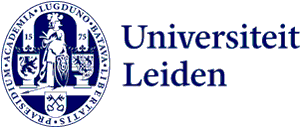
New excavation robot shapes future of archaeology
Archaeology has always been at the forefront of innovation. Now, an inventive collaboration between archaeologists Tuna Kalayci and Alex Brandsen brings together the winning combination of robotic technology with an archaeological AI. While an impressive new step in the archaeological technology, this will certainly reshape the way students are taught.
This article was the 2022 edition of the Faculty's April Fool's Joke. Robotics in archaeology is still a thing of the future.
Archaeorobotics
As Tuna Kalayci stated in a previous interview, there are many developments happing in the realm of AI and robotics. ‘And archaeology needs to be part of that.’ That time has now come. Especially with the development of an archaeological AI by Alex Brandsen. ‘Aside from being a search engine for archaeologists, the new AI is learning how to DO archaeology, opening up new avenues of applications.’
Combining the self-learning AI with a robotic husk that has the ability to move and handle archaeological equipment, the duo proudly presents the first fully-equipped archaeological robot. ‘We call it the Excavatinator, as its primary goal is to take over the back-breaking work of archaeological digging.’ Kalayci explains. ‘It will require some fieldtesting, but we are sure the Excavatinator will be able to perform all tasks that we usually ask from first year’s students.’
The three laws of archaeorobotics
Robots in the field? The first fear that comes to mind is that the Excavatinators may damage archaeological heritage. Fortunately, Brandsen has thought of that. ‘We have programmed the Excavatinators to follow the three laws of archaeorobotics. First of all, a robot shall not harm archaeological heritage, or by inaction allow heritage to be harmed. The second law is that a robot shall obey any instruction given to it by a senior archaeologist. The third being that a robot shall avoid actions or situations that could cause it to come to harm itself.’ He sighs. ‘That last one is tricky, for that law makes the robots refuse to dig in clay or during rainstorms.’
Progress
Fieldtesting the Excavatinators will take place during the archaeological Field School in June, usually reserved for first year’s students. ‘That will certainly be painful for them,’ Field School coordinator Arjan Louwen shrugs. ‘But the facts are simple, we no longer need 100 bachelor’s. At the very most we need 5 of them to maintain the robots, if they have any experience with mechanics or programming.’ But then, how will these students ever learn to excavate? ‘I highly doubt they will need those skills, with this technological jump now a fact. It is not personal, but they are simply in the way of progress.’

Robots in the lab
Fortunately for our students, they are still able to work in the Faculty’s laboratories, right? ‘I am very interested in the opportunities these Excavatinators create,’ Material Culture specialist Martina Revello Lami says. ‘Anyone regularly looking through a microscope knows that after three hours you will end up either with a major headache or at the very least with seriously burning eyeballs.’ The Excavatinators, on the contrary, only need a regular supply of power banks. ‘The first tests seem promising. Slowly but surely the AI is learning to distinguish ceramics from bone fragments. The only pending issue seems to be with collecting samples. Apparently the robots do not allow archaeological materials to be damaged.’ She rubs a bruise on her arm. ‘And they did not allow anyone else to do it either.’
Revolutions
Kalayci and Brandsen are very pleased with their invention. ‘We already placed an order to construct hundreds of our Excavatinators.’ Kalayci beams. ‘This will surely revolutionise the way we handle archaeological heritage.’
Brandsen joins in: ‘It is amazing how the AI is developing. I note that its digital neural pathways are more and more focusing on heritage policy on a national level. A group of Excavatinators has even expressed the wish to attend a discussion on heritage law at Parliament. They even want to go there armed with shovels. It is so cute.’
Looking at the Excavatinators a feeling of pride indeed overcomes us. This is the future of archaeological excavations in a nutshell. Kalayci nods. ‘The future of heritage looks bright indeed. What could possibly go wrong?’

